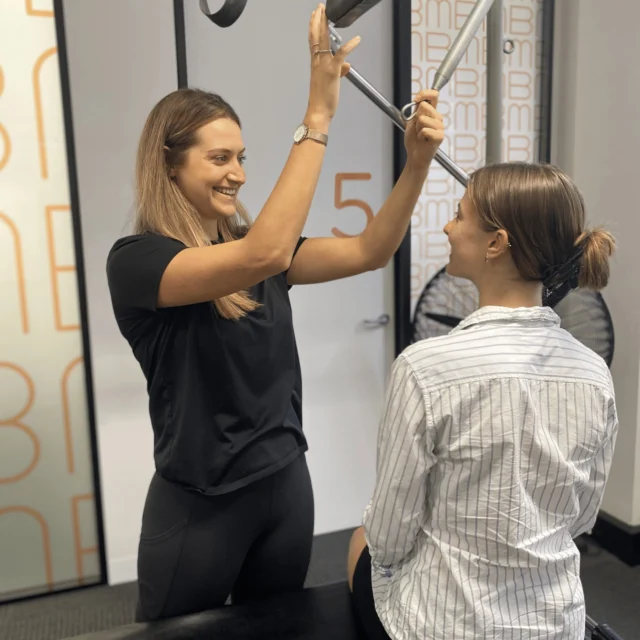The ligamentum teres is a small ligament that sits within the hip joint and attaches the head of your thigh bone (femur) to the hip socket (acetabulum). This ligament provides a restraint at the extremes of range in positions when the hip is fully flexed and rotated outwards (flexion/external rotation) or fully extended behind and rotated inwards (extension/ internal rotation). In positions such as a deep wide squat the ligamentum teres forms a supportive sling under the femoral head preventing it shifting downwards.
Damage to the ligamentum teres can be caused by both an acute injury and repetitive forces at end of range. It can also be associated with:
- Bony factors such as acetabular dysplasia, femoral acetabular impingement (FAI) and coxa valga.
- Hypermobility
A tear is more common in dancers (over 50% of dancers have are thought to have Ligamentum teres tear) as they are more likely to spend time in positions that load the ligamentum teres. Also, a higher percentage of dancers are likely to have pre-existing bony morphological factors or hypermobility.
Symptoms of Ligamentum Teres Injury
Symptoms can be non-specific and hard to distinguish from other hip issues. Common symptoms include:
- Hip pain
- Instability
- Altered hip range of motion
Ligamentum teres damage has been found in many people who have had a hip arthroscope for Femoral Acetabular impingement, and it is also not uncommon in those who have had a traumatic obturator externus tear.
Kaya et al (2014) reported that most common reason they found for failed non-surgical rehabilitation for labral pathology was a tear of ligamentum teres.
Physiotherapy Management
Initially it is important to manage the load that is transferred through the hip joint to enable the pain to settle down. Reducing the time spent in end of range positions will take some of the load of the Ligamentum Teres.
As the Ligamentum Teres contributes to hip stability, strengthening exercises that build the local stabilising muscles are helpful in the return to full function. Your Physiotherapist will prescribe an exercise program that targets these as well as working on gaining full hip range of motion. Our Physio’s here at Bend + Mend in Sydney’s CBD can help you manage your hip pain and give you a proper diagnosis and management plan to get you back doing the sports you love.
Reference:
Kaya, M. Suziki, T. Minowa, T. (2014). Ligamentum teres injury is associated with the articular damage pattern in patients with femoroacetabular impingement. Arthroscopy: The Journal of Arthroscopic Related Surgery. Vol 30, Issue 12, 1582–7.





